Many people who practice and enjoy yoga are naturally flexible. But should you modify your yoga practice if you have yoga hypermobility syndrome? This post will help you determine if you have yoga hypermobility syndrome and steps you can take to modify your yoga poses to make them safer.
Yoga Hypermobility Syndrome
Yoga hypermobility syndrome is an important, but often overlooked, health concern with yoga practitioners. Here are my suggestions:
- Determine if you have yoga hypermobilty syndrome by taking the hypermobility test.
- Ask a qualified health practitioner (such as a Physiotherapist) or yoga instructor to evaluate your poses and look for hyperextension of joints.
- If you do not have access to someone with an experienced eye, do your poses in front of the mirror and pay attention to your joints.
- Be on the lookout for hypermobile knees and hypermobile elbows.
- Avoid “carrying” your hypermobility into your day-to-day movements and activities.
- Refer to Yoga for Better Bones to see if there are poses that you should modify or avoid; especially if you are concerned about your bone health and osteoporosis.
Hypermobility Test and Exercises
You can learn about the hypermobility test in a blog post I wrote earlier this year. In another blog, I speak about hypermobility exercises and suggest specific modifications you should make to your exercise routine if you have hypermobility syndrome.
Hypermobility syndrome is something I first noticed when I was in my yoga teacher training and I still see it every week when I teach my yoga.
Hypermobility and Yoga Practitioners
I find that people who love yoga, tend to be people who are already more flexible than the average, so they have Yoga Hypermobility Syndrome.
They love to stretch. This makes them feel good, but they are not always the ones that need to stretch.
If you have yoga hypermobility syndrome (visit my other blog article to find out more about hypermobility syndrome and the hypermobility test), it’s critical that you really assess if you have hypermobile joints. However, that can be difficult for you because you have a harder time feeling where your joints are.
In my yoga class, I specifically ask the students to try to maintain a certain pose in their elbows or in their knees. In certain positions and in certain poses I notice its it’s very challenging for them to maintain the pose without seeing hypermobile elbows or hypermobile knees.
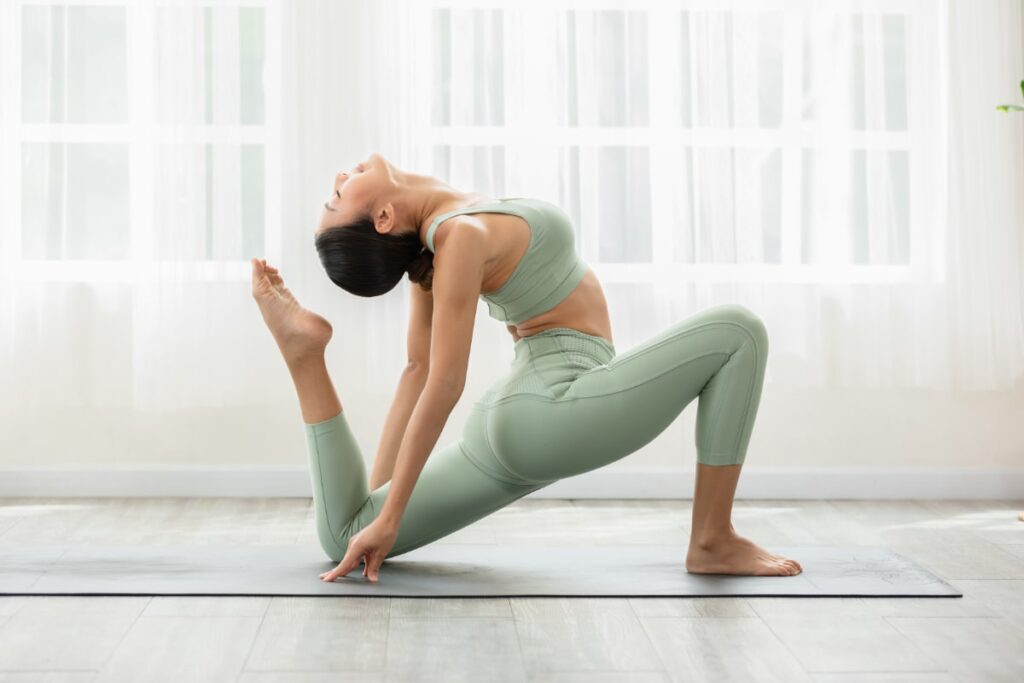
Your Yoga Poses and Hypermobility
You may have to breakdown your poses in order to understand the mechanics of your positions. Be mindful, work with a mirror, or have a friend or a teacher coach review your pose so that you learn the safe positions for your joints.
Hypermobile Elbows
Consider the table pose. If you’re always locking out on your elbows, then you’re putting your elbows at risk of hypermobile elbows. You’re hyper extending that joint constantly.
Hypermobile Knees
You see hyperextension of the knees (hypermobile knees) in poses such as the dancers pose. People take that hyperextension of their knees (hypermobile knee) and carry it through in their day to day life. They are just always “hanging out” with their knees bent backward — constantly hanging on (and stressing) their ligaments.
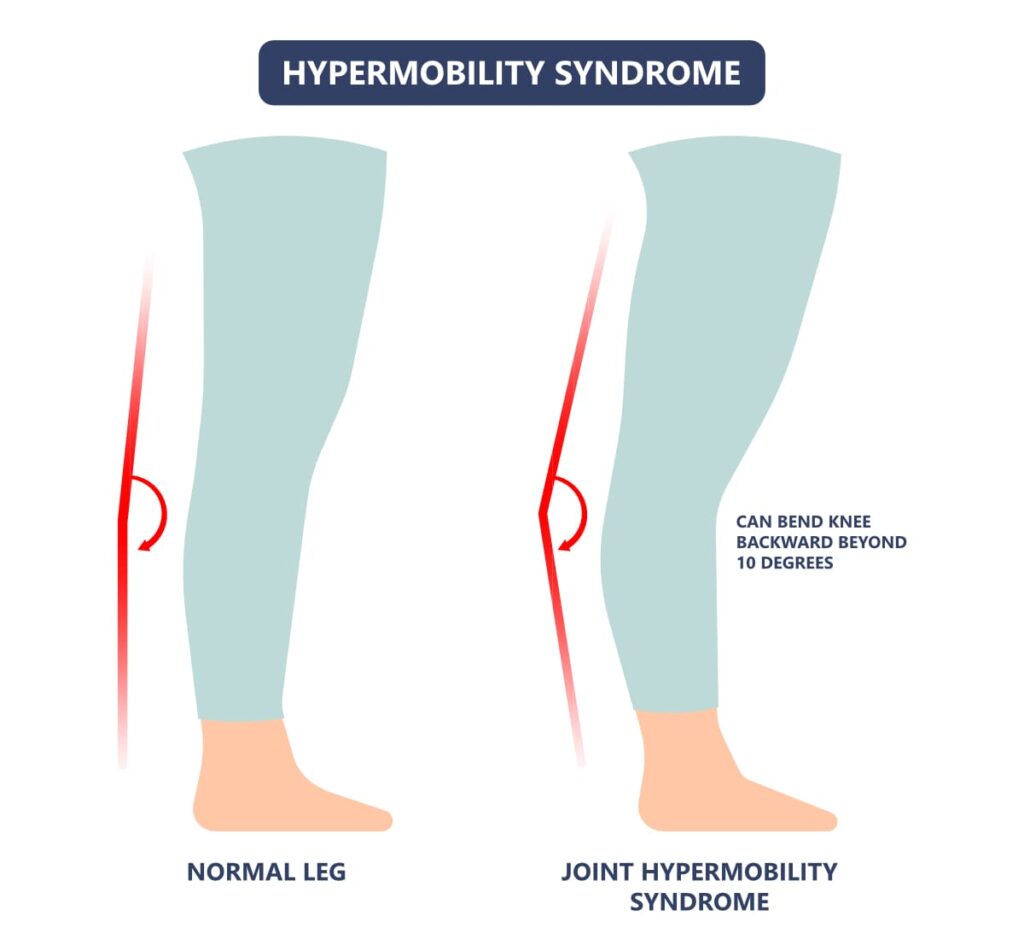
Pay Attention to Shoulder Alignment
Be mindful of poses that stress your shoulders. I wrote a blog article on shoulder alignment and Yoga that you might want to read.
How to Safely Practice Yoga
Although this blog post is dedicated to yoga hypermobility syndrome, there are further considerations for yoga practitioners with osteoporosis, osteopenia or low bone density.
I encourage you to read Yoga for Better Bones to learn about poses that you should modify or avoid if your have low bone density.
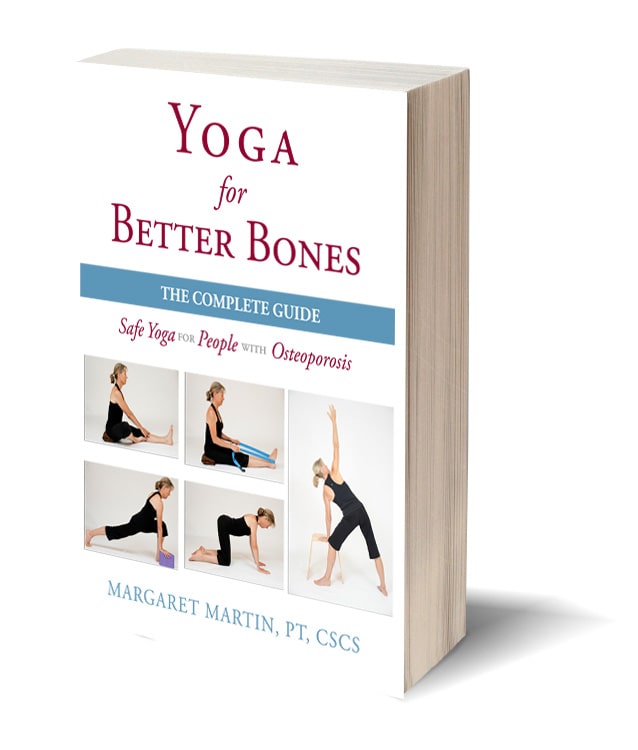
Yin Yoga Hypermobility
You can also check out the bone safe Yin Yoga routine for my patients and readers. This practice will help you avoid any risks that occur during Yin yoga.
Exercise and Osteoporosis
Exercise is an essential ingredient to bone health. If you have osteoporosis, therapeutic exercise needs to be part of your osteoporosis treatment program.
But what exercises should you do and which ones should you avoid? What exercises build bone and which ones reduce your chance of a fracture? Is Yoga good for your bones? Who should you trust when it comes to exercises for osteoporosis?
A great resource on exercise and osteoporosis is my free, seven day email course called Exercise Recommendations for Osteoporosis. After you provide your email address, you will receive seven consecutive online educational videos on bone health — one lesson each day. You can look at the videos at anytime and as often as you like.

I cover important topics related to osteoporosis exercise including:
- Can exercise reverse osteoporosis?
- Stop the stoop — how to avoid kyphosis and rounded shoulders.
- Key components of an osteoporosis exercise program.
- Key principles of bone building.
- Exercises you should avoid if you have osteoporosis.
- Yoga and osteoporosis — should you practice yoga if you have osteoporosis?
- Core strength and osteoporosis — why is core strength important if you have osteoporosis?
Enter your email address and I will start you on this free course. I do not SPAM or share your email address (or any information) with third parties. You can unsubscribe from my mail list at any time.
Conclusion
You practice yoga to make your quality of life better, to make your body stronger, to help you with stress reduction. But for many of you, your yoga practice could be counterproductive. You could be experiencing yoga hypermobility syndrome and not supporting your joints and muscles correctly.
I encourage you to practice safely and to seek out appropriate healthcare practitioners or yoga instructors to guide you through safe practice.
Margaret Martin
Further Readings
Joint Health
Visit my page dedicated to Joint Health.
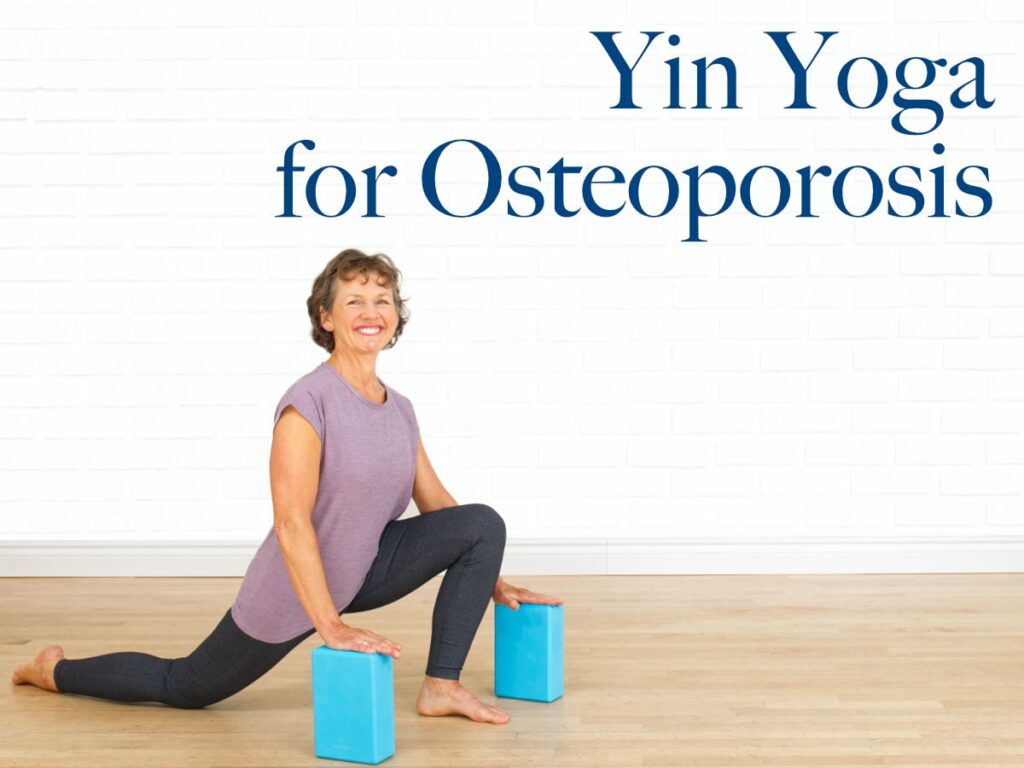
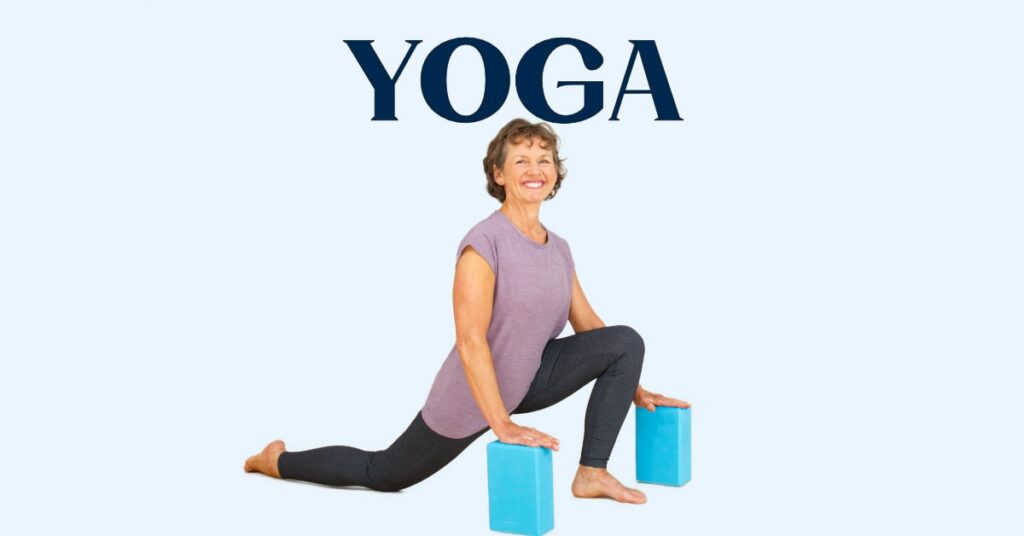
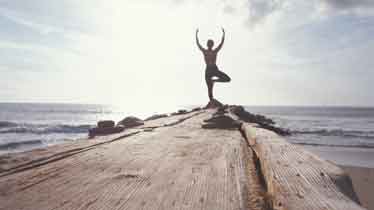
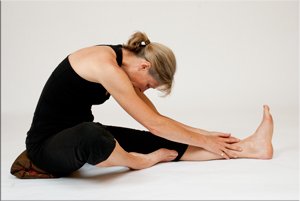

Comments
August 12, 2017 at 4:19am
Allie
Nice video. Thanks for sharing the information
September 28, 2017 at 3:11am
shalu
Nice
November 6, 2017 at 7:38am
Shalini
Nice Post… Thanks for sharing this information.
November 15, 2017 at 5:07am
Yoga Guru
Hi! very nice post about yoga and hypermobility. thanks for sharing great thought with us.
December 16, 2017 at 1:48am
lina
I love to read this post. thank you for sharing great post.
January 12, 2018 at 5:09am
Raksaplava
nice post .....
March 13, 2018 at 7:32am
Yoga Teacher Training Goa
this is really a great article
March 28, 2018 at 2:35am
Sumit
Good Post. Thanks for sharing the information
April 17, 2018 at 2:58pm
Olga
Margaret, thank you for this useful information.
June 26, 2019 at 7:30am
signature blankets
Such a wonderful article. Thanks for shared with us.
September 26, 2019 at 2:07am
loyanna prince
great post so thanks for this.
September 27, 2019 at 6:01pm
Margaret Martin replies
Hello, You're welcome. I appreciate you taking the time to write kind, positive comments. Wishing you many years of joyful, healthy Yoga practice.
Margaret
September 26, 2019 at 2:08am
dany
Very informative written post. The writer here has done a great job.
September 27, 2019 at 6:00pm
Margaret Martin replies
Hi Dany, I appreciate you taking the time to write kind, positive comments. Wishing you many years of joyful, healthy Yoga practice.
Margaret
September 27, 2019 at 2:37pm
Dog Roof
Impressive article thanks
September 27, 2019 at 6:00pm
Margaret Martin replies
Hello, I appreciate you taking the time to write kind, positive comments. Wishing you many years of joyful, healthy Yoga practice.
Margaret
November 6, 2019 at 3:03am
Madrid
Hi, The article is quite informative and very motivational. Thanks Keep doing the great work.
November 9, 2019 at 2:31pm
Dane Murphy
Thanks for sharing this blog is really helpful to us.
November 11, 2019 at 5:43am
aiyshakhanna
Thanks very informational and Helpful post
January 13, 2020 at 5:21am
Kamadhenu
Thanks for writing such great content and help us to learn much more.
January 13, 2020 at 7:48pm
Margaret Martin replies
You are most welcome. It is always great to hear from readers.
All the best,
Margaret
January 28, 2020 at 2:42am
India
Your work is very good and I appreciate you. Thanks for sharing a great blog.
January 28, 2020 at 6:45pm
Margaret Martin replies
Hi India.
You are most welcome. Thank you for your kind words.
All the best,
Margaret
January 28, 2020 at 12:59pm
Anita
this post is very informative for me and thanks so much for sharing this post with us
January 28, 2020 at 6:50pm
Margaret Martin replies
Hi Anita,
You are most welcome. I feel strongly about this topic. I often get hypermobile students in my Yoga class. Most have never been told by any health care professional that they are hypermobile. Being more aware of our of our body's strengths and challenges allows us to practice safely with confidence.
All the best,
Margaret
March 24, 2020 at 7:21pm
Titch
Great post jusr one thing. Not everyone who is extra flexible has joint hypermobility syndrome. Just saying :)
May 24, 2020 at 1:38am
SB
Thanks for sharing useful information with us on hypermobility and yoga. I practice yoga regularly and did not realize that I was hypermobile. Now I have made appropriate adjustments based on your advice. Thank you. Keep up to good work.
July 15, 2020 at 10:25am
Mary David
Thank you so much.
July 15, 2020 at 11:03am
Richard Martin replies
You are welcome.
July 31, 2020 at 7:15am
Pooja
Thanks for this information. I like to read your post. very well written and interesting information. keep sharing.
August 1, 2020 at 10:23am
Larry Benjamin
Hello there! I simply wish to give you a huge thumbs up for the great information you’ve got
right here on this post. I am returning to your blog for more soon.
August 22, 2020 at 1:43pm
anas
You are most welcome. Thank you for your kind words.
All the best
August 22, 2020 at 1:44pm
lenioljamesrehan
Thanks for writing such great content and help us to learn much more.
October 24, 2020 at 7:15am
kranti yoga
I have found your blog to be really informative and the photos are breathtaking – really inspiring overall.
November 6, 2020 at 9:54pm
Richard K. Hatcher
This is my first time to visit here. I found so much of informative stuff over here. Thanks!
November 24, 2020 at 12:25pm
liam karlson
this post is so educative ,thanks for sharing such a post
June 30, 2021 at 7:11am
yoga instructor certification
Great post Thanks for sharing the valuable information.
July 27, 2021 at 4:54am
Indiagift.in
Thanks for sharing valuable information !
July 28, 2021 at 5:08pm
Pandya Store
I agree with you about yoga’s “powerful ability to calm your mind and help your body relax. ” Love all the benefits we enjoy from yoga!
July 28, 2021 at 5:10pm
Khatron Ke Khiladi 11
Thanks for sharing the valuable information.
July 28, 2021 at 5:14pm
Pandya Store
I love this! I never thought of yoga as a workout but every since adding it to my life it’s made such a difference and not just physically but mentally and I notice when I neglect it. It’s such a powerful exercise that makes a world of difference!
September 26, 2021 at 9:30am
Peaceful life
Yoga is the best thing to keep your mind strees free and relax .Thanks for sharing the information